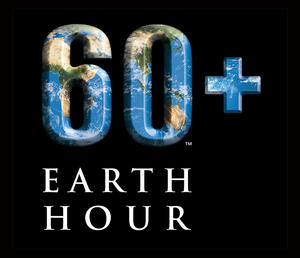Households and businesses around the globe are asked to turn off their non-essential lights and other electrical appliances for one hour. The aim is to raise awareness towards the need to take action on climate change.
Earth Hour started in 2007 in Sydney, Australia when 2.2 million individuals and more than 2,000 businesses turned their lights off for one hour to take a stand against climate change. Only one year later Earth Hour had become a global sustainability movement with more than 50 million people across 35 countries/territories participating. Global landmarks such as the Sydney Harbour Bridge, CN Tower in Toronto, Golden Gate Bridge in San Francisco, and Rome’s Colosseum, all stood in darkness, as symbols of hope for a cause that grows more urgent by the hour.
In March 2009, hundreds of millions of people took part in the third Earth Hour. Over 4000 cities in 88 countries/territories officially switched off to pledge their support for the planet, making Earth Hour 2009 the world’s largest global climate change initiative.
On Saturday 27 March, Earth Hour 2010 became the biggest Earth Hour ever. A record 128 countries and territories joined the global display of climate action. Iconic buildings and landmarks from Asia Pacific to Europe and Africa to the Americas switched off. People across the world from all walks of life turned off their lights and came together in celebration and contemplation of the one thing we all have in common – our planet.
Earth Hour 2011 will take place on Saturday 26 March at 8.30 pm (local time). This Earth Hour WWF (World Wide Fund for Nature) wants you to go beyond the hour, so after the lights go back on think about what else you can do to make a difference.

